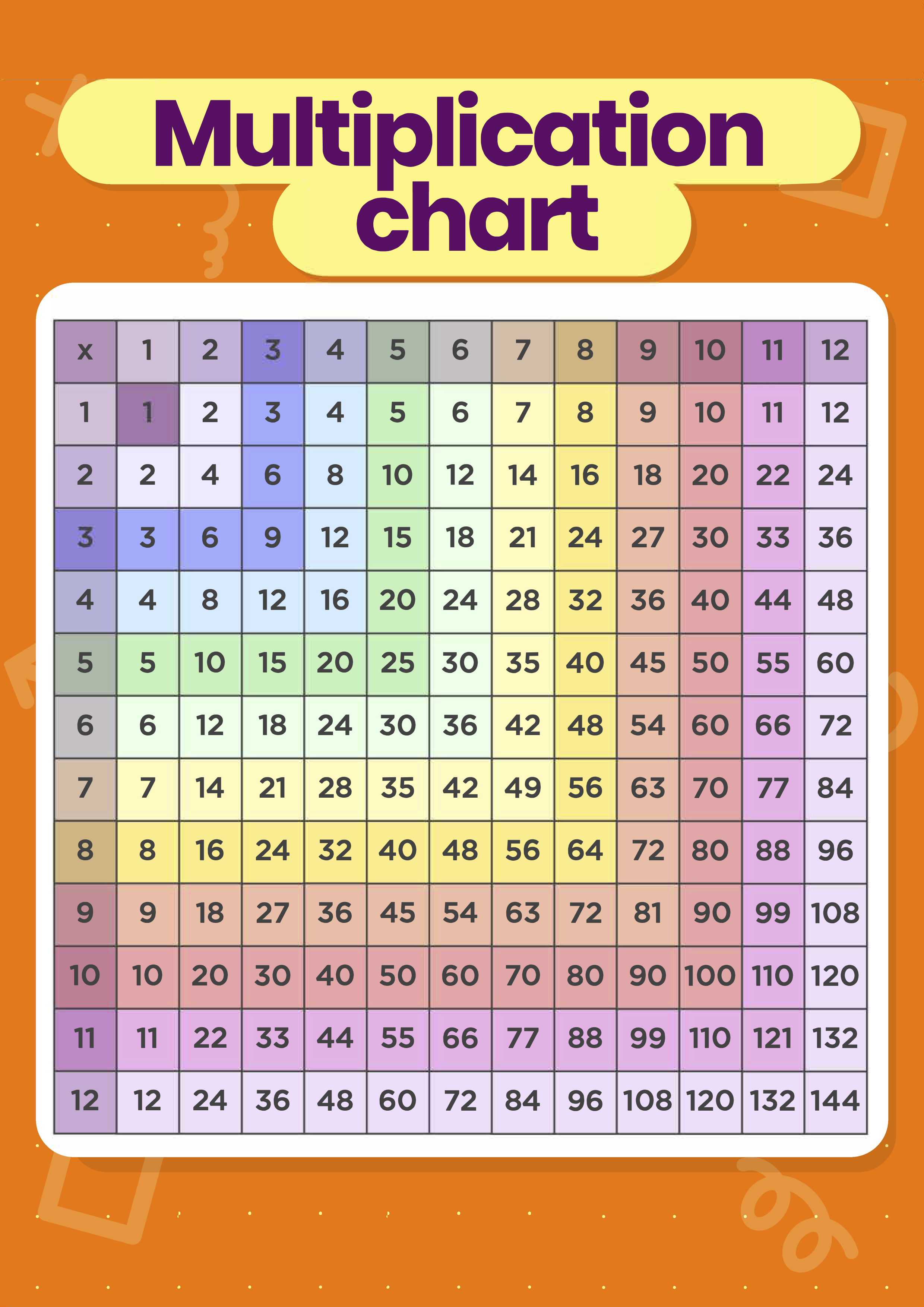Multiplication is a foundational math skill that students use throughout their academic and everyday lives. One of the most effective tools for learning and mastering multiplication is the multiplication chart. Whether you’re a student just beginning your math journey or a parent helping your child, a multiplication chart can be an invaluable resource.
What is a Multiplication Chart?
A multiplication chart is a grid that displays the products of numbers. Typically, the numbers 1 through 10 (or sometimes 1 through 12) are listed across the top row and the left column. By following a row and column to their intersection, you can quickly find the product of two numbers. For example, in a 10×10 chart, to find 3 x 4, you locate the number 3 in the left column and the number 4 in the top row; where they meet, you’ll find the product, 12.
Why Use a Multiplication Chart?
- Visualization of Patterns
A multiplication chart helps learners see the patterns in multiplication. For instance, multiples of 2 form a sequence of even numbers, while multiples of 5 end in 0 or 5. Recognizing these patterns can make multiplication feel less daunting. - Memorization Aid
Repetition and memorization are key to mastering multiplication, and a chart provides a clear, organized way to practice. It allows students to reinforce their recall of multiplication facts. - Quick Reference
Even for those who have memorized their multiplication tables, a chart can serve as a handy reference. Whether solving complex math problems or refreshing forgotten facts, a multiplication chart is always helpful. - Building Confidence
By practicing with a multiplication chart, learners can build their confidence. As they become more familiar with the grid, they’ll find it easier to calculate products mentally, boosting their overall math skills.
How to Use a Multiplication Chart Effectively
- Start Small
Begin with the smaller numbers, such as 1 through 5. Once these are mastered, expand to larger numbers. - Practice Daily
Consistency is key. Spend a few minutes each day reviewing the chart to reinforce memory and speed. - Look for Patterns
Encourage students to observe the relationships between numbers. For example, the products in the 2 times table are half of the products in the 4 times table. - Combine with Other Tools
Use flashcards, apps, or games alongside the multiplication chart to make learning fun and interactive.
Printable Multiplication Charts
For parents, teachers, and students, printable multiplication charts are readily available online. These charts can be customized to include larger numbers or specific formats, such as blank charts where students fill in the products themselves as a practice exercise.
The Role of Multiplication Charts in Modern Education
While technology provides calculators and apps, the multiplication chart remains an essential learning tool. It teaches not just the facts but also the underlying relationships between numbers, fostering a deeper understanding of math concepts.

Conclusion
The multiplication chart is more than just a tool—it’s a gateway to mathematical confidence and competence. By mastering the chart, students lay a strong foundation for more advanced math skills, from division to algebra and beyond.
So whether you’re a young learner, a parent, or a teacher, the multiplication chart deserves a place in your educational toolkit. It’s a simple, timeless resource that continues to empower generations of math learners.



Leave a Reply